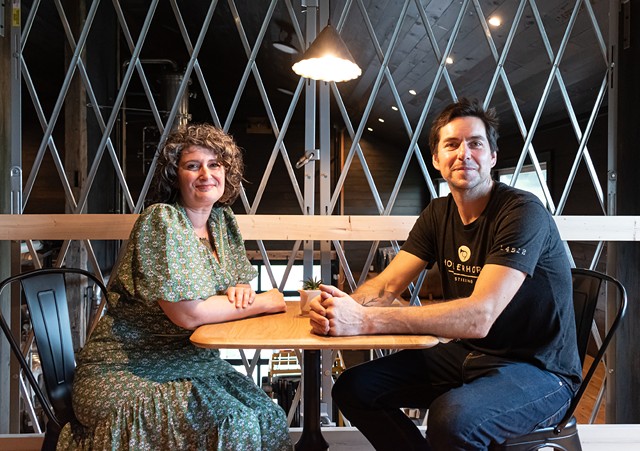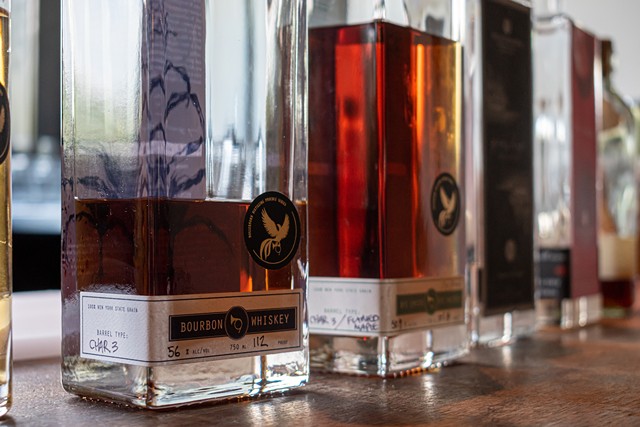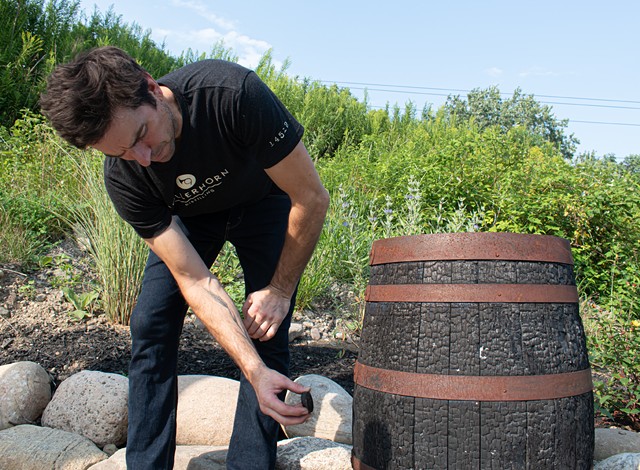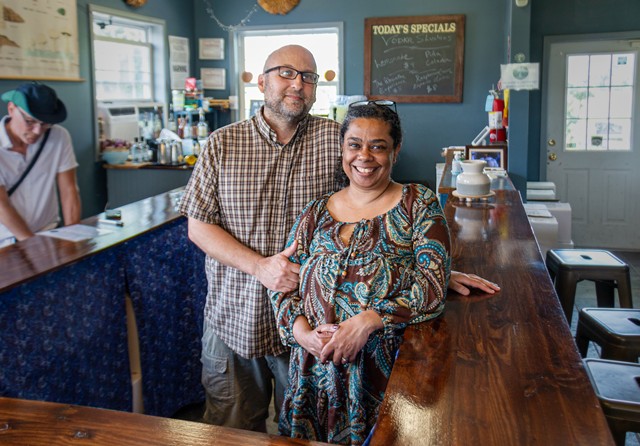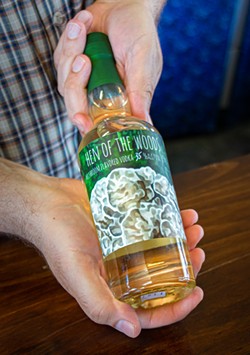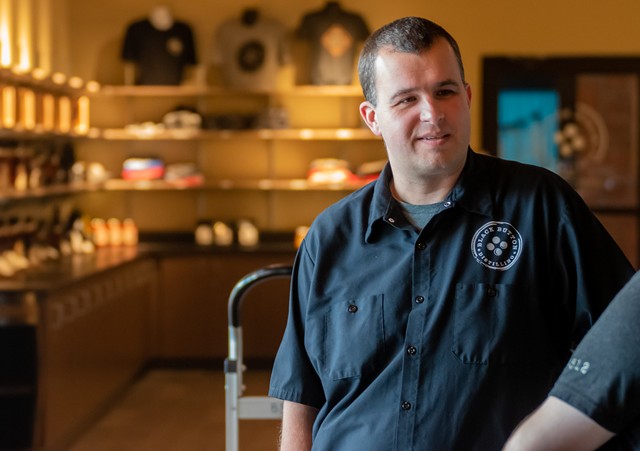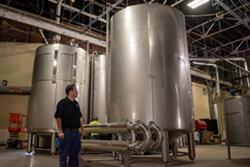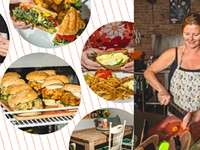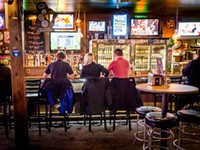[
{
"name": "500x250 Ad",
"insertPoint": "5",
"component": "15667920",
"parentWrapperClass": "",
"requiredCountToDisplay": "1"
}
]
It’s a quiet Monday morning on the outskirts of Naples, the blistering early summer heat soothed in spurts by breezes picked up from Canandaigua Lake a few miles north.
Inside the hardwood laden barroom of Hollerhorn Distilling, owner and distiller Karl
Neubauer pulls the cork out of a bottle of Eau de Vie, a style of crystal-clear fruit brandy translating literally to “water of life.”
This bottle is distilled entirely from strawberries, plucked from Art of the Sun farm two miles down the road (run by his nephew, Malcolm), and carries the Germanic nomenclature for the fruit: Erdbeer. The scent of fresh strawberries explodes from the bottle. It’s an ethereal essence of fruit comparable to the aroma carried on the winds from an unseen patch of wild fruit; something riper for capture in poetry than in glass, yet here it is.
“Half of my family lives in Austria, and I kind of follow the traditional schnapps method,
which is the same as the French Eau de Vie,” Neubauer said. “You’re storing sunlight.”
In 2007, then-Governor Elliot Spitzer signed the Farm Distillery Act into law. That piece of legislature, like its sister Farm Winery and Farm Brewery acts, cut through much of the red tape surrounding the opening of a distillery. That, in turn, proliferated a slew of distilleries to pop up across the state—about 200 since the bill’s signing.
But there was a catch.
The law requires at least 75% of ingredients used in farm distillery spirits must be New York sourced. A similar provision exists in the acts for wine and breweries and presents a particular challenge for the latter. Barley can be finicky in New York’s climate, and hitting the 60% requirement—and, starting in 2029, 90%—can be difficult to source.
But for distilleries, it’s a different matter altogether. Many are far exceeding the provisions set in the law not by legal mandate, but simply the passion for the craft to create something uniquely New York. At Hollerhorn, its spirit bases range from local fruit to maple syrup to rye, the latter being a hearty and historic distillation crop in New York.
“I would say like 99% of everything we use comes from within 40 miles of here,”
Neubauer said. “We follow the fruit; New York is obviously an amazing place to be
growing and farming in to begin with.”
The legal framework for small distilleries to enter the market in New York had bred
experimentation that the state had not seen prior to prohibition. Or, in some cases, ever.
Two Finger Lakes east, on the shores of Cayuga Lake, sits the modest storefront of
Mushroom Spirits Distilling. One could be forgiven for thinking the moniker is too on the nose to be what it sounds like, but they would also be wrong.
About two decades ago, the husband-and-wife team Joe and Wendy Rizzo started Blue
Oyster Cultivation, a mushroom farm in Ithaca. Five years ago, Joe had the idea to get
a farm distillery license and begin making infusions of mushrooms.
“There’s nothing like it,” he said. “I looked all over the planet really, there was a gin in
Japan that had a mushroom or two in the botanical bill, and one in Connecticut, I think,
that had mushrooms and maple in it or something like that, but nothing to this extent.”
Rizzo described the spirits as essentially tinctures—spirits imbued with the essence of
mushrooms through a steeping process. The distillery itself is small, working in 25-
gallon batches. A portion of the vodka and whiskey used as the base for the spirits is
also sourced from other distilleries from around the state.
As for taste, Rizzo offered three samples: a vodka infused with maitake (also known as
Hen of the Woods), a vodka infused with shitake and a whiskey infused with enoki,
shitake, Hen of the Woods and oyster mushrooms. The Hen of the Woods vodka is subtle, carrying a round, savory note as if adorned with a hint of broth before finishing clean. The whiskey is earthy, with notes of soil and a more profound mustiness — notes that, while sounding unappetizing, may appeal to a fan of more intense flavors like truffles. The shitake was the star of the show. Its flavor is intense, capturing the nuanced notes of the mushroom. An upfront savory, meaty character gives way to a clean finish just lightly tinged with a hint of earth.
Rizzo's spirits are built to add an interesting new dimension to a cocktail, but also
are strong enough to stand on their own. “Craft whiskeys are great and all, but it’s just been done to death,” he said. “We thought it would be interesting to create new flavors using these mushrooms that we’ve grown, maybe they have a place.”
What Rizzo described is a story of the creation of a wholly unique type of spirit. It’s also
a methodology—using whatever crops you have grown to turn into booze—that has
defined the spirits industry the world over.
Back in Rochester, Black Button Distilling founder Jason Barrett sits at a window-facing table near the front of the distillery’s University Avenue space. He has a near-encyclopedic knowledge of New York spirit history and can expound at length on the origins of the industry in New York. Black Button's Empire Rye, a centuries-old style reborn under the modern craft distilling boom, is a testament to that history. Barrett described the birth of rye whiskey, made from a hearty grain that is both easy to grow and highly productive, as something born of farmers’ economics.
“If you were to put two barrels of whiskey on either side of a mule, that’s roughly
equivalent to about five tons of corn,” he said. “You were able to turn your time and
excess land into a salable crop.”
Barrett is also in the camp of almost all his ingredients being sourced from New York.
He’s gone one step further by founding a farm in Bristol, which produces a portion of the crops for Black Button, mostly botanicals and honey. The very small percentage of crops Barrett does use from out of state are things simply impossible to grow in New York. But even then, it’s not for want of trying.
“I have actually tried to grow oranges in New York,” he said. “Turns out, even in a hot
house or a greenhouse, it does not work.”
Gino Fanelli is a reporter for WXXI/CITY. He can be reached at [email protected].
Inside the hardwood laden barroom of Hollerhorn Distilling, owner and distiller Karl
Neubauer pulls the cork out of a bottle of Eau de Vie, a style of crystal-clear fruit brandy translating literally to “water of life.”
This bottle is distilled entirely from strawberries, plucked from Art of the Sun farm two miles down the road (run by his nephew, Malcolm), and carries the Germanic nomenclature for the fruit: Erdbeer. The scent of fresh strawberries explodes from the bottle. It’s an ethereal essence of fruit comparable to the aroma carried on the winds from an unseen patch of wild fruit; something riper for capture in poetry than in glass, yet here it is.
“Half of my family lives in Austria, and I kind of follow the traditional schnapps method,
which is the same as the French Eau de Vie,” Neubauer said. “You’re storing sunlight.”
In 2007, then-Governor Elliot Spitzer signed the Farm Distillery Act into law. That piece of legislature, like its sister Farm Winery and Farm Brewery acts, cut through much of the red tape surrounding the opening of a distillery. That, in turn, proliferated a slew of distilleries to pop up across the state—about 200 since the bill’s signing.
But there was a catch.
The law requires at least 75% of ingredients used in farm distillery spirits must be New York sourced. A similar provision exists in the acts for wine and breweries and presents a particular challenge for the latter. Barley can be finicky in New York’s climate, and hitting the 60% requirement—and, starting in 2029, 90%—can be difficult to source.
But for distilleries, it’s a different matter altogether. Many are far exceeding the provisions set in the law not by legal mandate, but simply the passion for the craft to create something uniquely New York. At Hollerhorn, its spirit bases range from local fruit to maple syrup to rye, the latter being a hearty and historic distillation crop in New York.
“I would say like 99% of everything we use comes from within 40 miles of here,”
Neubauer said. “We follow the fruit; New York is obviously an amazing place to be
growing and farming in to begin with.”
The legal framework for small distilleries to enter the market in New York had bred
experimentation that the state had not seen prior to prohibition. Or, in some cases, ever.
Two Finger Lakes east, on the shores of Cayuga Lake, sits the modest storefront of
Mushroom Spirits Distilling. One could be forgiven for thinking the moniker is too on the nose to be what it sounds like, but they would also be wrong.
About two decades ago, the husband-and-wife team Joe and Wendy Rizzo started Blue
Oyster Cultivation, a mushroom farm in Ithaca. Five years ago, Joe had the idea to get
a farm distillery license and begin making infusions of mushrooms.
“There’s nothing like it,” he said. “I looked all over the planet really, there was a gin in
Japan that had a mushroom or two in the botanical bill, and one in Connecticut, I think,
that had mushrooms and maple in it or something like that, but nothing to this extent.”
Rizzo described the spirits as essentially tinctures—spirits imbued with the essence of
mushrooms through a steeping process. The distillery itself is small, working in 25-
gallon batches. A portion of the vodka and whiskey used as the base for the spirits is
also sourced from other distilleries from around the state.
As for taste, Rizzo offered three samples: a vodka infused with maitake (also known as
Hen of the Woods), a vodka infused with shitake and a whiskey infused with enoki,
shitake, Hen of the Woods and oyster mushrooms. The Hen of the Woods vodka is subtle, carrying a round, savory note as if adorned with a hint of broth before finishing clean. The whiskey is earthy, with notes of soil and a more profound mustiness — notes that, while sounding unappetizing, may appeal to a fan of more intense flavors like truffles. The shitake was the star of the show. Its flavor is intense, capturing the nuanced notes of the mushroom. An upfront savory, meaty character gives way to a clean finish just lightly tinged with a hint of earth.
Rizzo's spirits are built to add an interesting new dimension to a cocktail, but also
are strong enough to stand on their own. “Craft whiskeys are great and all, but it’s just been done to death,” he said. “We thought it would be interesting to create new flavors using these mushrooms that we’ve grown, maybe they have a place.”
What Rizzo described is a story of the creation of a wholly unique type of spirit. It’s also
a methodology—using whatever crops you have grown to turn into booze—that has
defined the spirits industry the world over.
Back in Rochester, Black Button Distilling founder Jason Barrett sits at a window-facing table near the front of the distillery’s University Avenue space. He has a near-encyclopedic knowledge of New York spirit history and can expound at length on the origins of the industry in New York. Black Button's Empire Rye, a centuries-old style reborn under the modern craft distilling boom, is a testament to that history. Barrett described the birth of rye whiskey, made from a hearty grain that is both easy to grow and highly productive, as something born of farmers’ economics.
“If you were to put two barrels of whiskey on either side of a mule, that’s roughly
equivalent to about five tons of corn,” he said. “You were able to turn your time and
excess land into a salable crop.”
Barrett is also in the camp of almost all his ingredients being sourced from New York.
He’s gone one step further by founding a farm in Bristol, which produces a portion of the crops for Black Button, mostly botanicals and honey. The very small percentage of crops Barrett does use from out of state are things simply impossible to grow in New York. But even then, it’s not for want of trying.
“I have actually tried to grow oranges in New York,” he said. “Turns out, even in a hot
house or a greenhouse, it does not work.”
Gino Fanelli is a reporter for WXXI/CITY. He can be reached at [email protected].
Latest in Culture
More by Gino Fanelli
-
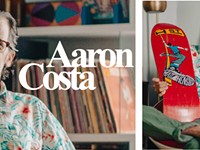
ROCHESTER TEN | AARON COSTA
Aug 12, 2024 -
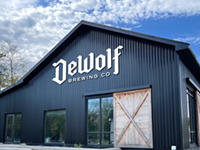
DeWolf Brewing Company set to open in Victor
Apr 26, 2024 -
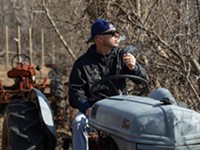
These small cannabis farmers say New York's legal weed rollout is ruining their lives
Mar 21, 2024 - More »
Readers also liked…
-

Telltale signs
May 17, 2024
